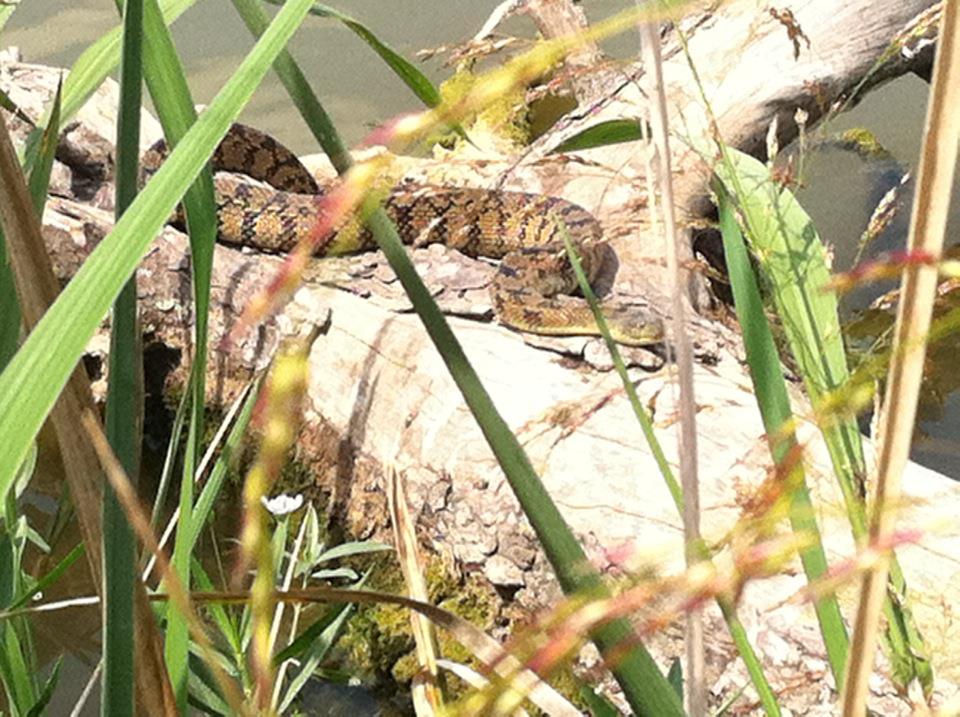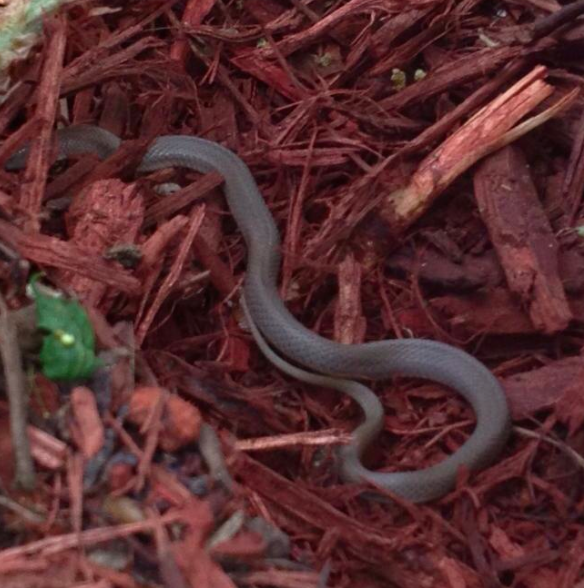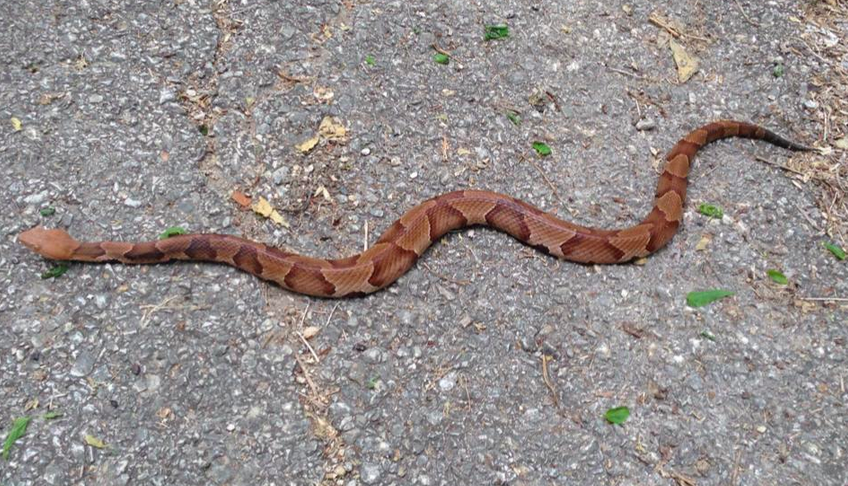
A blotched water snake at White Rock Lake: Courtesy Jay Forrester, 2012
After a walk at Harry Moss Park, the Marlin family’s dog, Abby’s, paw began to swell. When the inflammation and the dog’s discomfort increased, they took her to the emergency vet clinic and ascertained that a venomous snake had bitten the pup at the park. It wouldn’t be the first time that’s happened to a dog at the same park.
In fact, anecdotally, snakes sightings seem on the rise around here. In a (admittedly highly unscientific) Facebook poll, I asked acquaintances if they’d encountered any snakes this summer. Personally, I saw two, just last weekend (one in Richardson and one at Rowlett Creek preserve) and in the past months I’ve seen two green snakes on the sidewalks of Lake Highlands and one rat snake on the White Rock Trail.
Mark Williamson of Lake Highlands says he sees snakes in his backyard pond pretty regularly. “We have a gold fish pond in the backyard and the snakes love to snack on our fish. Totally freaks me out to see one back there when I feed the fish.”
Susan Joiner of White Rock area says her dogs killed two in her backyard.
“My two dogs caught a snake in the back yard . When I saw it, it had about 50 bite marks. Thank goodness it was a dirt snake. They were tossing it around like a stuffed animal.”
“I saw a big one on the White Rock/Cottonwood Trail, about two miles north of the Lawther drop-in point,” Kerry Slaughter writes. “Just taking it’s sweet time meandering across the trail. I looked up just in time to avoid riding my bike right over it.”
A running group at Norbuck Park last week spotted this guy.
Wildlife expert Bonnie Bradshaw, founder of 911 Wildlife, says this is the time of year Dallas residents see a lot of activity. As the days grow hotter, she says, snakes will become more nocturnal.
She says most of the snakes in our neighborhood are harmless — “99 percent of the residential calls we get are rat snakes or rough earth snakes,” she says. Rat snakes, which can grow to an intimidating six feet, are sometimes mistaken for rattlers, especially if they are in the bushes; they can shake and sound like a rattle.
She notes that many people mistake water snakes for venomous water moccasins when they actually are diamond back and blotched water snakes, which are not venomous. (See a blotched water snake in top photo).
“It is extremely rare for someone to be bitten by a venomous snake in the DFW area. If it happens, it is usually a case of someone trying to replicate something they’ve seen on TV.”
Here are some more tidbits from the expert:
Do not try to capture or kill a snake; let it go on its way.
To avoid backyard snakes, do not leave dog food or dog feces lying around. This attracts rodents and rodents attract snakes.
Seal potential entry points around your home. Bradshaw says little snakes wind up in houses in search of insects. Also, take out trash and anything that attracts insects.
Keep your dogs on a leash on the trails, parks and woods.
As for Abby the dog, she is recovering, but only after multiple and pricey trips to the vet.
She received the anti venom at the ER vet within about an hour of the bite, Claire Marlin says. Her son Drew was walking Abby when the bite occurred.
“The next morning she went to Central Expressway Animal Clinic where they monitored her for the day and gave her several doses of pain medicine and antibiotics. She’s been back for one more blood test after five days because the anti-venom slows the uptake of the snake venom so it takes five days to start affecting the liver and kidneys. She takes the liver medicine for a month to protect it. What an education,” Claire exclaims. “Our vet, Dr. Troy Cobb, says there is tremendous pain with snake bites, and we saw that with her. Even with pain medication, she would lay there and whimper for five days following. He says [the venom] attacks the muscle tissue and that’s why it’s so painful, for either humans or animals. He also said that this year, for some reason, he has already treated more snake bites than ever.”









